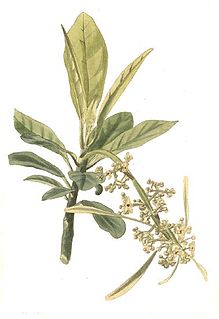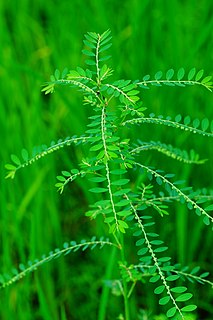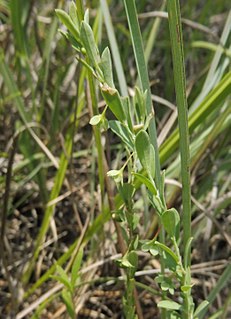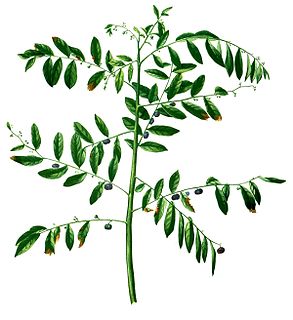| Phyllanthus revaughanii | |
|---|---|
| Scientific classification | |
| Kingdom: | Plantae |
| Clade: | Angiosperms |
| Clade: | Eudicots |
| Clade: | Rosids |
| Order: | Malpighiales |
| Family: | Phyllanthaceae |
| Genus: | Phyllanthus |
| Species: | P. revaughanii |
| Binomial name | |
| Phyllanthus revaughanii Coode | |
Phyllanthus revaughanii is a species of flowering plant in the family Phyllanthaceae, native to the Mascarene Islands and the Mozambique Channel Islands (Europa Island, Juan de Nova Island). [2] Its natural habitat is rocky shores. [1]
In biology, a species ( ) is the basic unit of classification and a taxonomic rank of an organism, as well as a unit of biodiversity. A species is often defined as the largest group of organisms in which any two individuals of the appropriate sexes or mating types can produce fertile offspring, typically by sexual reproduction. Other ways of defining species include their karyotype, DNA sequence, morphology, behaviour or ecological niche. In addition, paleontologists use the concept of the chronospecies since fossil reproduction cannot be examined. While these definitions may seem adequate, when looked at more closely they represent problematic species concepts. For example, the boundaries between closely related species become unclear with hybridisation, in a species complex of hundreds of similar microspecies, and in a ring species. Also, among organisms that reproduce only asexually, the concept of a reproductive species breaks down, and each clone is potentially a microspecies.

The flowering plants, also known as angiosperms, Angiospermae or Magnoliophyta, are the most diverse group of land plants, with 64 orders, 416 families, approximately 13,164 known genera and c. 369,000 known species. Like gymnosperms, angiosperms are seed-producing plants. However, they are distinguished from gymnosperms by characteristics including flowers, endosperm within the seeds, and the production of fruits that contain the seeds. Etymologically, angiosperm means a plant that produces seeds within an enclosure; in other words, a fruiting plant. The term comes from the Greek words angeion and sperma ("seed").

Phyllanthaceae is a family of flowering plants in the eudicot order Malpighiales. It is most closely related to the family Picrodendraceae.










